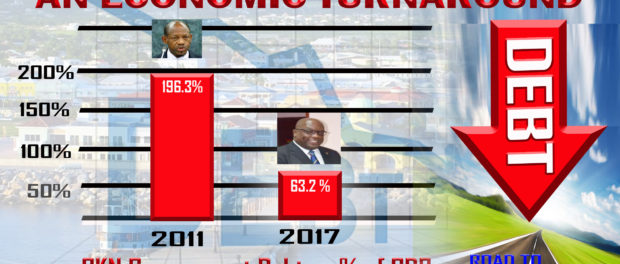By: Media Source
In a November 2000 publication of the performances of the St Kitts-Nevis economy, the IMF highlighted areas of chronic weaknesses of the Denzil Douglas led Administration in a publication entitled St Kitts and Nevis: Economic Developments.
The new driver Dr Douglas, who took over the economy in 1995, came in for some razor-sharp criticisms how he was handling the country’s finances during the period under review. According to the IMF report, “The central government finances have weakened significantly since 1995. Spending has risen as a result of the need for extensive repair and reconstruction.”
Dr Douglas from the inception has always shown that public debt and deficits were his normal. “Higher interest rate related to increasing debt burden and a rising effective interest rate have also contributed to the growing deficits.”
According to the IMF critique, “Combined with losses from the St Kitts Sugar Manufacturing Corporation (SSMC) , the consolidated public sector deficit shifted from a surplus in 1995 to a very sizeable deficit in 1998- 1999.”
Having reflected on the performances of the Douglas government the IMF became very concerned about the poor handling of the St Kitts economy. “Reflecting the worsening public finances, external public debt and debt service obligations have grown rapidly in recent years. Exports of goods and services (as a percentage of GDP) have been flat or declining”
The precipitous decline of the SSMC and its sugar output was exacerbated by poor management skills by persons who had no idea about the sugar crop. “The sugar industry contracted severely in 1998 and 1999 by 18 and 21 percent respectively… the late application of fertilizers contributed to the decline in output. Sugar amounted to 24,600 tons and 17,700 in 1998 and 1999 respectively, compared to the record of 30,900 tons in 1997.
During the PAM successful tenure in government from 1980 to 1995, Dr Simmonds, a medical doctor by profession who seemed to understand economic principles, decided to keep the sugar tonnage output at a minimum given that the production cost per ton of sugar was higher than the selling price per ton of sugar.
With the change of the PAM government in 1995, fiscal prudence also took a vacation. The new driver, who is also referred to as Mr. Debt, not having one iota about fiscal prudence, went into DEBT and bought a fleet of new vehicles for the SSMC. A new locomotive was also refurbished in the UK for some 5 million which was named Pauline who was the wife of a political lackey Chinee. He took the SSMC debt from a mere 1M in 1995 to a whopping 19M deficit just one year later. The new driver claimed that the Simmonds government ran the sugar industry down almost to a grinding halt and that the workers were demotivated with old vehicles and machinery.
The IMF critique stopped short of declaring that it does not take rocket science to figure out that if the SSMC production cost is greater than the selling price that the business is in bad shape. “The sugar Industry continued to perform poorly, as the SSMC, the sole producer and exporter of sugar, continued to make heavy losses. The industry’s high production costs, averaging EC$2,440 per ton compared to the average selling price of EC$997 per ton in 1998, have led to persistent losses.
Dr. Douglas administration has taken the economy of St Kitts-Nevis from a tiny debt of 24% of GDP in 1995, when it took over, to a gigantic 185% Debt to GDP ratio in 2009 where St Kitts and Nevis had the most significant public debt among its Caribbean peers and the third largest in the world as a percentage of the economy.


Leave a comment
You must be logged in to post a comment.